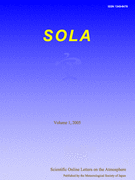Considering urbanization effects on atmospheric states and subsequent precipitation is crucial to improve the accuracy of forecasting localized heavy rainfall around urban areas and to mitigate related disasters. For this purpose, it is effective to use a time development model that can accurately represent city-specific effects, such as urban heat island effect, in the assimilation process, and to assimilate high-frequency/high-density surface observation data that have not been used thus far. Therefore, this study incorporated a forecast model with an urban canopy scheme into an ensemble-based assimilation system and assimilated dense surface data from an Atmospheric Environmental Regional Observation System. Then, we performed analysis-forecast experiments for a heavy rain event in Tokyo metropolitan area on 30 August 2017, to examine the impact of urbanization. Our results showed that the urban scheme and surface observation improved near-surface temperature and moisture fields, thereby contributing to the formation of a clearer convergence line between the easterly and southerly winds where it was observed. Consequently, these improvements resulted in an earlier onset of rainfall and better reproduction of the heavy rainfall distribution.
View full abstract
